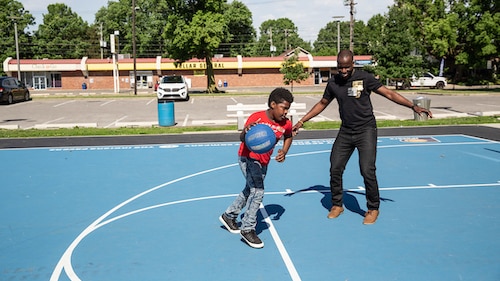What started as a temporary role for Pam Iorio at Big Brothers Big Sisters of America (BBBSA) ended up becoming a full-time gig as CEO of the organization.
After a 29-year career in politics, including eight years in office as the 57th Mayor of Tampa, FL, Iorio took on her role as President and CEO of BBBSA. The organization went through some challenges and faced the need for digital transformation, so the board asked her to help them find a solution.
Iorio’s leadership and philanthropic endeavors helped her spearhead the organization’s digital transformation.
Pinpoint the challenges
“When I was asked to lead BBBSA, the national office was going through some challenges and the idea was that I would just step in on a temporary basis to see if I could be helpful. Well, temporary seemed to turn into something a little bit longer and you can’t help but fall in love with the mission of Big Brothers Big Sisters, and the impactful nature of our one-to-one relationships,” Iorio recalls of her early days at the organization.
Upon her arrival in 2014, BBBSA needed a new database technology to replace the outdated and antiquated system they had been using. “Credit goes to folks back in the early 2000s because they realized they needed a national database to track all the matches and the national outcomes. So, they set out to create a database and it was called AIM, Agency Information Management — it was homegrown.”
While creating an in-house database was a good idea at the time, issues arose when people needed to make changes or teach a new employee how to use it. “There was no user manual. Every time we tried to make improvements, it would cause new issues. It was cumbersome. It was antiquated. It was totally inflexible. We joked it was held together by masking tape.”
Launch a digital transformation
“When you’re a federated model (an organization with a national office and geographically dispersed affiliates), getting input continuously from your agencies is very, very important. And we are in all 50 states. We have large agencies, medium-sized agencies, and small agencies. You can imagine a world of difference between an agency in Chicago or Boston, or San Francisco and then a very small agency with just a handful of employees in a more rural part of the country.”
Iorio hired a chief technology officer to help map out the unique challenges every agency had and began to consider options for a best-in-class technology partner.
After nearly one year of meeting with technology leads from BBBSA agencies across the country, Iorio, the staff, and the board of directors agreed Salesforce was the best option to lead their digital transformation.
Build it and they will come
“Most people would say, ‘you really need a huge team to do this.’ But, we didn’t have a huge team. That’s just the way it was — we knew we needed outside help.” Iorio and her team knew they needed to fundraise for a new database and associated training, which would allow them to hire outside consultants to help onboard Salesforce across the entire organization in the U.S.
BBBSA hired two firms to roll out the new technology and train employees on how to use it. “Every agency had to have at least one super trainer and then larger agencies might have five, six, seven, or eight super trainers depending on how many staff they had.” Each agency’s individual success was crucial to Iorio and her team, which is why they spent extra time methodically training and providing resources for all their stakeholders through this digital transformation.
“What I’m the most excited about is the Salesforce platform we’ve adopted is the foundation for much of our successes going forward in terms of how we do our day-to-day work and serve the children,” Iorio explains. “Now that we have this foundation in place and the basic match management system, we can be a leading-edge technology going forward in the decades to come.”
Demand the best in technology
“You’ve got to demand the best in terms of technology. If you don’t keep up with technology, you can fall hopelessly behind. And at some point, it could even threaten your viability.”
Iorio’s advice for other nonprofits with a federated model looking to adopt new technology is to make sure you have great staff, communicate with your agencies, and listen to their ideas. “Our role is to listen to them. Our job is to support them. We have to learn what is it that they need and bring together committees or task forces to best articulate the viewpoints. Then the job of the national office is to take that input and find the best partners for implementation.”
“We are going to be able to offer different applications, different ways of doing business, different integrations to our agencies. And often, people don’t think of nonprofits in that light. In fact, they think of nonprofits as toiling away on some antiquated technology. We were in that very position prior to adopting Salesforce. But now, we feel we have partnered with a technology company that is always going to be on the cutting edge of what’s next in customer relationship management.”
Join our session at Dreamforce 2019 to learn how to eliminate data silos and barriers at your nonprofit.




























